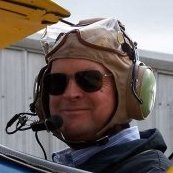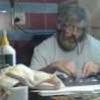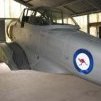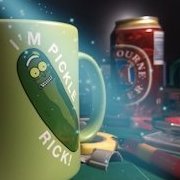-
Posts
1,370 -
Joined
-
Last visited
About Steve D

Profile Information
-
Gender
Male
-
Location
Surrey
Recent Profile Visitors
Steve D's Achievements

Very Obsessed Member (5/9)
6.3k
Reputation
-
As an engineer who did imperial A levels, a metric degree followed by an early career with an American engineering and construction company back in imperial I ended up bi-unitary. I draw in imperial,1/4 inch scale but then need to make stuff in mm. 1.89 gets used a lot (inches to mm at scale) Cheers Steve
- 163 replies
-
- 1
-

-
- Flower Class Corvette
- Snowberry
-
(and 1 more)
Tagged with:
-
Jeff, This is sooo common, probably every model I've ever made somehow changes shape as you build it. Measure 3 times, fix and lo and behold, 3 months later you realise it's in the wrong place. Console yourself in the knowledge that no-one, and I mean no-one, can possibly know your model as well as you do. They will look and be amazed just as you will in a few years when you look back at what you accomplished Doesn't stop the annoyance at the time though Coming on very nicely Cheers Steve
- 163 replies
-
- 3
-

-

-
- Flower Class Corvette
- Snowberry
-
(and 1 more)
Tagged with:
-

HMS Havock 1893 - A class Torpedo Boat Destroyer
Steve D replied to Steve D's topic in Work in Progress - Maritime
Ha, it’s about half scale. It’s one of the tools I inherited from my grandfather, it’s a watchmaker’s hammer Cheers Steve -

HMS Havock 1893 - A class Torpedo Boat Destroyer
Steve D replied to Steve D's topic in Work in Progress - Maritime
Thanks Rob, I only see flaws, like all of us. I do want to document everything I’ve learnt for others to gain some guidance from. Exciting day tomorrow as I have an appointment at the Brass Foundry, research for the next challenge, the process overlaps. More later Cheers Steve -

HMS Havock 1893 - A class Torpedo Boat Destroyer
Steve D replied to Steve D's topic in Work in Progress - Maritime
I think I'd better provide an update or you'll think I've given up I'm at an odd stage, much is complete, a bit still needs making and I'm trying to hold off fixing things to the hull for as long as possible. Once I start fixing stuff, I will damage it, no question, so delaying fixing stuff is important. But, I want to fix things as it makes it easier to see what I left to sort out. So, I'm wandering somewhat and not being very productive. Still, a few bits did get sorted and some remade. This is therefore a mixed update Little bit of pleasure, I painted the Downton pump and added a hose to the hose rack. The hose was folded canvas (AKA handkerchief) with a light coat of deck tan I've been debating the rear quarter name letters that can be seen on destroyer pictures. None of the pictures I have of Havock show anywhere near this level of detail, but this picture of HMS Violet (a 30-know destroyer from 1897) clearly shows the practice existed on these early TDB's and that they were not painted Now, if I had a brain, I would have added these letters to the etch sheet, but I don't and didn't. However, a rummage in my old etching drawer re-surfaced a sheet of commercial etched letters (which must be at least 20 years old) that have the right font (almost) and the middle size is more or less perfect. This is the result (port side only done at this time). Possibly just a little large, but I'm happy with it The other thing to notice from that picture of HMS Violet is just how thin the stern grating is. I mean its really thin. My grating that I was so proud of, now looks 1:24th scale On the aft steering position, I'd made up a small coxswain's grating out of 2 thicknesses of boxwood veneer, coming up 0.9mm thick (or 2inch full size). So, I glued up some more and cut out a large 2 inch grid grating square, sitting here in its frame for assembly Once sanded to 2mm thick (that is as small as I dared go) and edged, here it is finished with the first one as a comparison This grating is to allow the steering gear to no interfere with deck working, so it sits on 6 double feet (these were on the etch sheet, but no picture, sorry. Next thing to attempt was the stern jack staff, which also anchors the hand rail wire and the upper longitudinal awning ridge wire. This is as fiddly as these things always are, the diagonal braces were installed with a 0.5mm wire and then soldered up, the wire then being formed into a loop to create the mounting for the ridge wire. Here it is in place, unpainted. And with the stern grating in place, wash-deck locker also made and glued to the grating. Much happier with that version. Next I finally got around to making up the aft gun platform steps. This picture should explain why I didn't apply canvas over the entire rear deck. This needs painting, but I want to try some wood finished first, more later... I so want to start fixing stuff, but I must be patient Last little side project, the meat screen Check out this early photograph of Havock moored off Portsmouth, you can see a mesh box hanging from the awning ridge wire between the bridge and the forward funnel. This, I believe, is a meat screen (possibly veg, but more likely meat).. Careful measurement of this and another picture gave me dimensions of ~18 inch cubed Here is my version before painting with a realistic knocked-about look Better painted, but less clear in a picture A few days ago, I promised guns. Well, here is the first 6 pdr, with gun shield. You have to love brass guns, these really are too good to paint I'm most pleased that the gun elevating lock worked out aligning the cradle and the gun mount perfectly. I have some wood to add to the stock and the leather shoulder cushion (brown fimo) but overall, I think this one really worked out well Here is is in its place in primer. The ring on the conical mount is for ready-use ammo, will be added at the end The forward guns don't have shields in the pictures I have of Havock, seems they weren't fitted. Once job less... So, random stuff going on while I work though the assembly sequence and check and recheck and re-recheck Cheers Steve -
Love the naval details here Alun, and painted flags, excellent stuff Cheers Steve
- 222 replies
-
- 1
-

-
- scratchbuilt
- Fleetscale
-
(and 1 more)
Tagged with:
-

HMS Havock 1893 - A class Torpedo Boat Destroyer
Steve D replied to Steve D's topic in Work in Progress - Maritime
Thanks Alun, the name was relief etched in the brass, just about works at 1:48th scale Cheers Steve -

HMS Havock 1893 - A class Torpedo Boat Destroyer
Steve D replied to Steve D's topic in Work in Progress - Maritime
I’ll take that, very kind thanks -

HMS Havock 1893 - A class Torpedo Boat Destroyer
Steve D replied to Steve D's topic in Work in Progress - Maritime
Little update. Spent some time tidying up the deck, lightened the grey colour and gave the canvas a second coat which improved it all a lot. Next, I set to work to finally solder the rear gun platform, the stanchions were still loose and the handrail was missing. This took another ply template like the one I used for the bow platform railing. Interesting drawing exercise as some of the stanchions sit on legs while others are external making the true locations of the ball tops not in a circle but on a series of arcs. As before I laser cut holes for the drawing pins so that the radius is spot on That platform has 12 legs, lucky the holes were drilled from the original build template Here it is in place. Note the raised section to the front to clear the torpedo tubes Tubes and gun in place to get the right impression, now I need to put the 4 steps together Behind the platform you can see the clear area for the aft steering position. I made the pieces for this assembly a long time ago but have now painted them Grating made from 0.9mm boxwood, voice pipes added. On the drawing there is a line shown 2/3rds of the way up. I thought a lot about this and decided that above the line the internal colour would be lighter to help this position at night. White would stand out too much so I painted it the same pale blue-grey colour as the turtle back. I like the effect this gives. All made from brass bar the wheel and grating The front has diagonal stays to mounting points on the deck Cheers Steve -
I hesitate to mention it, but I also have a 3D model of the type of rubber dinghy used by the Kriegsmarine in WW2 if any one needs one Cheers Steve
-
Nice clean finish Jon, on to the next challenge Cheers Steve
-

HMS Havock 1893 - A class Torpedo Boat Destroyer
Steve D replied to Steve D's topic in Work in Progress - Maritime
Thanks for the vote of confidence Rob, but I remain a little disappointed with the shrinkage. My hope is that when its all complete there will be lots of distractions on the deck (rope coils etc) to ameliorate the error I believe the Corticene company was founded in 1895 (around the time Havock was launched). Searching for information on-line I stumbled upon a share certificate on ebay for the company, random or what!. However, I believe the deck covering was either painted sailcloth or possibly a special canvas fabric made from coir. Removable coir-based matting with canvas edging was used on the iron deck of WW1 destroyers, I have pictures showing that. Cheers Steve -
Love that detail Alun, v special Cheers Steve
- 222 replies
-
- 1
-

-
- scratchbuilt
- Fleetscale
-
(and 1 more)
Tagged with:
-

HMS Havock 1893 - A class Torpedo Boat Destroyer
Steve D replied to Steve D's topic in Work in Progress - Maritime
Thanks Andreas, as I’m painting it mostly on my knees I can tell you it feels very solid and robust, but not heavy Cheers Steve -

HMS Havock 1893 - A class Torpedo Boat Destroyer
Steve D replied to Steve D's topic in Work in Progress - Maritime
Better late than never. Still some cool stuff to build, I reckon at least 3 months left Cheers Steve







.thumb.jpg.b4a5069fd2c2dd5708ce1694345c5b11.jpg)
